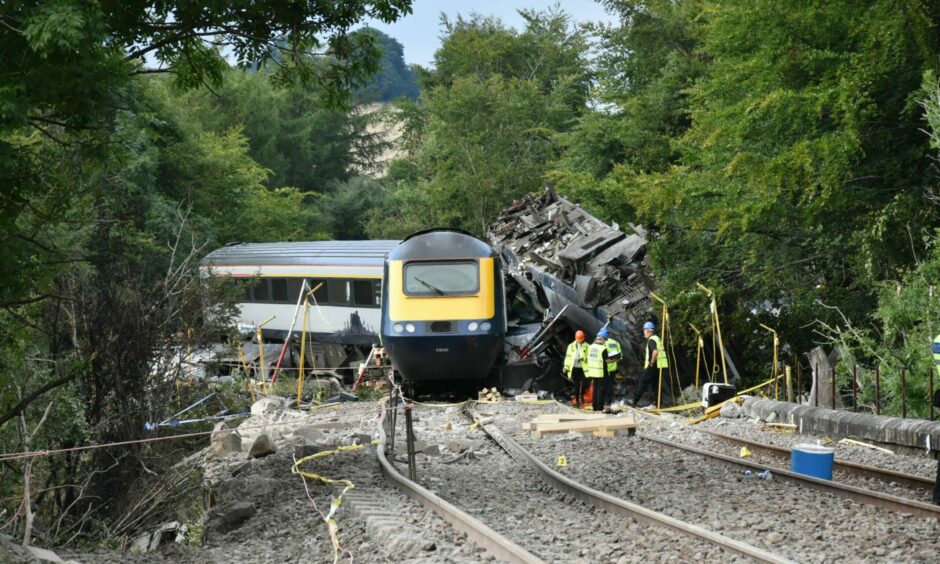A group will be formed to ensure safety features on older trains are changed after the Stonehaven rail crash, a top politician has announced.
Scotland’s Minister for Transport Jenny Gilruth made the pledge to the Scottish Parliament this afternoon on the day investigators published their final report into the fatal crash.
The Rail Accident Investigation Branch’s 298-page analysis concludes there were multiple failures that contributed to the crash.
Investigators have published 20 recommendations for seven organisations to implement.
Seven relate to reducing derailment risk and ensuring trains built prior to 1994 – as the one in the crash was – have modern crashworthiness features.
‘We must learn lessons’
They could include fitting seatbelts and airbags in the driver’s cab and making batteries less like to start fires.
Some changes have already been made to older trains running in Scotland, but Ms Gilruth wants to ensure more change is overseen.
In a speech at Holyrood this afternoon she said: “While rail remains the safest form of transport, we must seek to learn the lessons from this incident, to improve further the safety of all who work and travel on the railways of Scotland.
And to ensure that we do take appropriate steps, and quickly, I am announcing today that Transport Scotland will convene a steering group to take forward implementation of the recommendations about safety performance in accidents of older rolling stock, including high-speed train rolling stock, on ScotRail.”
‘Outcome would have been better’
RAIB’s report said the train’s coaches “generally performed well in the accident.”
Ms Gilruth said in her speech: “However, RAIB ‘considers it more likely than not that the outcome would have been better if the train had been compliant with modern crashworthiness standards’.”
She added that RAIB acknowledged the speed at the time of the crash was significantly beyond speeds even modern trains are designed to provide protection for.
During her speech, Ms Gilruth also reflected on other parts of the RAIB report, which questioned why a drain at the site was constructed to the wrong design.
Had it been built in the right way, it would have functioned better and possibly not washed debris onto the track.
Urgent meeting
The report also questioned why route control officers allowed the train to drive without a speed limit despite knowing of four obstacles on the line within 11 miles of the crash scene.
Ms Gilruth said she this morning wrote to her UK Government counterpart, Grant Shapps “seeking an urgent meeting to discuss the report’s findings in full detail – and what that means for both Governments.”
Mr Shapps, who visited the crash scene the day after the tragedy, is to write to the families of those who lost loved ones in the crash to discuss any concerns following the findings of the report.
A Network Rail spokesman said: “The report is not about apportioning blame, but about understanding what happened on August 12 and we will now carefully review the final report and the recommendations that RAIB makes.
“The report makes clear there are fundamental lessons to be learnt by Network Rail and the wider rail industry.”
A ScotRail spokesman said: ““The majority of the RAIB recommendations relate to other parties but ScotRail will play its part fully in ensuring that safety lessons are learned.
“We are working closely with Network Rail and the wider industry to do everything possible to reduce the risk of something like this ever happening again.”



